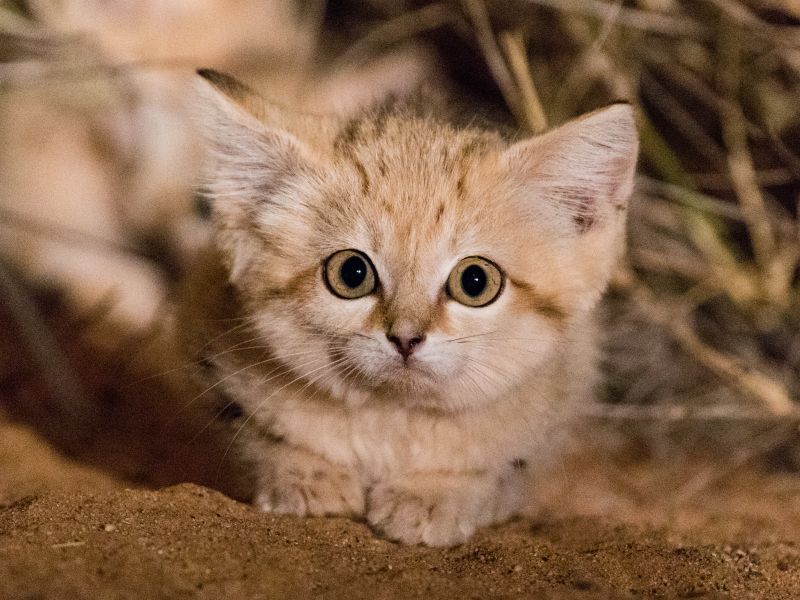
Rare Sand-Swimming Blind Mole Rediscovered After Nearly a Century

The elusive De Winton's golden mole, once thought extinct, has resurfaced in South Africa after almost a century of disappearance, stunning wildlife experts and igniting hope for the preservation of this unique species
The blind golden mole, known for gliding through sand, has been rediscovered in South Africa 87 years after it was feared to be extinct.
After a two-year search using DNA samples and a sniffer dog, a team of conservationists and geneticists from the Endangered Wildlife Trust (EWT) and the University of Pretoria has successfully located the De Winton's golden mole among sand dunes in the northwest of the country.
This elusive species had not been officially sighted since 1936 and was previously only found in the small region of Port Nolloth in the northern Cape. About the size of a mouse or hamster, with a shimmering coat that blends with the sand, they are extremely difficult to spot. Additionally, they live in inaccessible burrows, leave minimal traces behind, and have keen hearing that detects movements from above ground.
A beach in the northwest of South Africa where De Winton's golden moles are living.
Scientists used samples of environmental DNA (eDNA) to identify the species, which is the DNA animals shed as they move through their surroundings, including skin cells, hair, and feces.
Samantha Mynhardt, a conservation geneticist with the Endangered Wildlife Trust and Stellenbosch University, expressed confidence in their ability to extract and sequence the DNA of De Winton's golden mole from the challenging soil environment. "Extracting DNA from soil is not without its challenges, but we have been honing our skills and refining our techniques - even before this project - and we were fairly confident that if De Wintons golden mole was in the environment, we would be able to detect it by finding and sequencing its DNA," said Mynhardt in a press release.
San Diego Zoo Wildlife Alliance
Mosquitoes are driving these birds to extinction. With only 5 left in the wild, scientists are racing to save the species
During a June 2021 expedition, the team surveyed up to 18 kilometers (11 miles) of dune habitat daily and, with the assistance of a trained scent-detection dog named Jessie, collected over 100 soil samples from sites along the northwest coast where golden mole activity was detected. Through this, they established the presence of multiple golden mole species in the area.
The challenge lay in determining whether the De Wintons golden mole was among them. While common species like the Cape golden mole and Grants golden mole were easily identifiable, the team could not definitively identify the De Wintons golden mole due to the availability of only one reference DNA. They had to wait until a second gene sequence for the species, from a specimen housed in a Cape Town museum, became publicly available nearly a year later.
Bingo, it was a clear match.
The blind mole lives beneath the sand and has sensitive hearing that can detect vibrations from movement above the surface.
Nicky Souness
Cobus Theron, the senior conservation manager for EWT and a member of the search team, expressed his elation, stating, "Despite the skepticism of many, I maintained unwavering belief that the De Winton's golden mole still inhabited our ecosystem, and it's incredibly gratifying to see that belief validated."
One of the first images of a sand cat kitten ever documented in the wild in Morocco by Panthera and partners, 2017.
Gregory Breton
The findings of a recent study published in the Biodiversity and Conservation journal suggest that the adorable sand cats may be at risk. The research indicates that the species may be widespread along the west coast, but their low abundance and potential threat from habitat loss due to diamond mining highlight the need for urgent conservation action to protect their populations.
The golden mole project was a collaboration with the conservation organization Re:wild, as part of its Search for Lost Species initiative, which is dedicated to finding species with uncertain status. The rediscovery of De Winton's golden mole marks the 11th species to be found since the program began in 2017.
Christina Biggs, manager of the Search for Lost Species, stated in a press release that the achievement of the search demonstrates the determination of the EWT team: "They spared no effort in their search, and now we can work to protect the habitats of these endangered and scarce moles."
The detection method also holds promise for future missions worldwide. "We have not only solved the mystery, but have also opened up a new frontier of eDNA, offering opportunities not only for moles but also for other endangered species," Theron said. Don't miss out on the latest scientific discoveries and advancements - sign up for CNN's Wonder Theory science newsletter to explore the universe.












